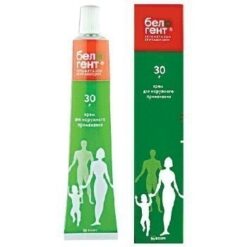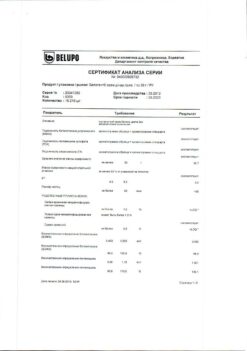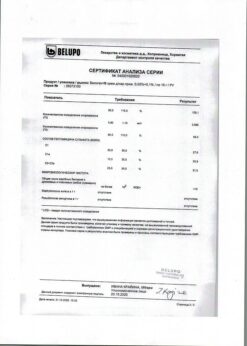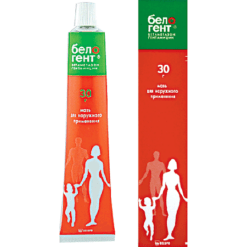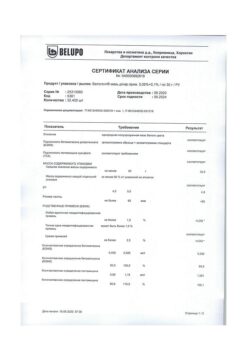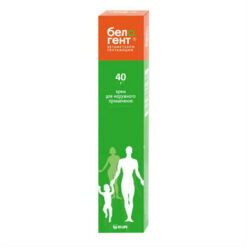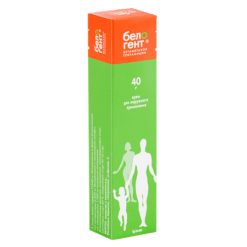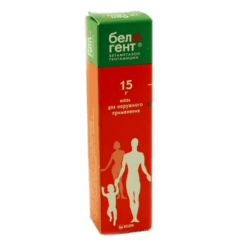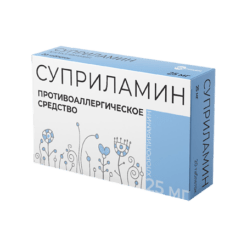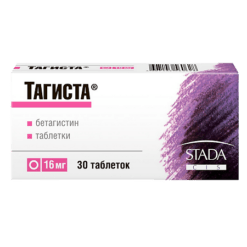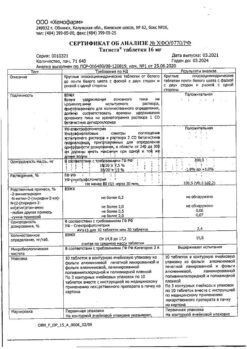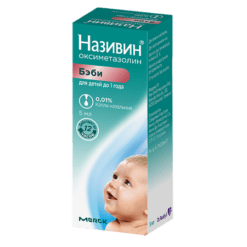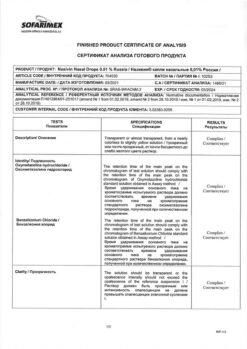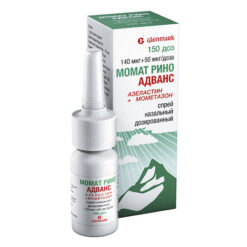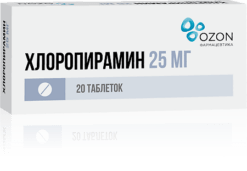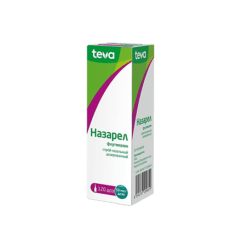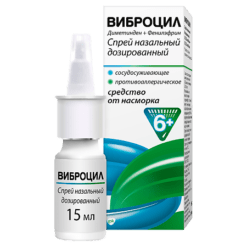No products in the cart.
Belogent, 0.05%+0.1% cream 5 g
€1.00
Out of stock
(E-mail when Stock is available)
Description
Pharmacotherapeutic group:
Glucocorticosteroid for topical use + antibiotic aminoglycoside
ATC:
D.07.X.C.01 Betamethasone in combination with other drugs
Pharmacodynamics:
Belogent® is an anti-inflammatory, anti-allergic, antipruritic, antibacterial agent.
Betamethasone dipropionate is a synthetic glucocorticosteroid (GCS) that has anti-inflammatory, anti-allergic, antipruritic and vasoconstrictive effects. When applied to the skin surface it narrows vessels, relieves itching, reduces release of inflammatory mediators (from eosinophils and mast cells), interleukins 1 and 2, gamma-interferon (from lymphocytes and macrophages), inhibits hyaluronidase activity and reduces vascular wall permeability.
It interacts with specific receptors in the cell cytoplasm, stimulating the synthesis of mRNA, inducing the formation of proteins, including lipocortin, which mediate cellular effects. Lipocortin inhibits phospholipase A2, blocks release of arachidonic acid and biosynthesis of endoperoxides, prostaglandins, leukotrienes (contributing to inflammation, allergy and other pathological processes).
Gentamicin is a broad-spectrum antibiotic of aminoglycoside group. It has bactericidal action and provides highly effective local treatment of primary and secondary bacterial skin infections. It is active against Gram-negative bacteria: Pseudomonas aeruginosa, Aerobacter aerogenes, Escherichia coli, Proteus vulgaris, Klebsiella pneumonia; and against Gram-positive bacteria: Streptococcus spp. (sensitive strains of β- and α-hemolytic Streptococcus group A), Staphylococcus aureus (coagulase-positive, coagulase-negative strains and some strains producing penicillinase).
It is inactive against anaerobes, fungi and viruses.
Pharmacokinetics:
Transdermal absorption of active substances into blood is very low when the drug is applied externally in therapeutic doses. Use of occlusive dressings increases absorption of betamethasone and gentamicin, which may lead to an increased risk of side effects.
Indications
Indications
Dermatoses, allergic and inflammatory skin diseases with secondary bacterial infection attachment or probability of its development: Eczema, atopic dermatitis, neurodermatitis, contact dermatitis (including occupational), allergic dermatitis, psoriasis, red squamous lichen, phlebotoderma, anogenital itching.
Infective dermatitis due to insect bites, scabies, scrapes, abrasions, thermal skin lesions and diaper rash.
Pyoderma of various localizations (strepto-staphyloderma, impetigo, sycosis, ecthyma).
The Belogent® cream is primarily used for acute and sub-acute inflammatory skin diseases including those accompanied by exudation.
Active ingredient
Active ingredient
Composition
Composition
1 g of the cream contains:
active ingredient:
betamethasone dipropionate 0.640 mg (0.064%) converted to betamethasone – 0.500 mg and gentamicin sulfate converted to gentamicin base 1.000 mg (0.1%);
excipients:
Chlorocresol 1.000 mg,
Sodium dihydrophosphate monohydrate 3.0 mg,
phosphoric acid 0.020 mg,
soft white paraffin – 150.000 mg,
liquid paraffin 60,000 mg,
macrogoal cetostearate 22,500 mg,
cetostearyl alcohol [cetyl alcohol 60%, stearic alcohol 40%] 72,000 mg,
sodium hydroxide – q.s.,
water – q.s. up to 1,000.0 mg.
How to take, the dosage
How to take, the dosage
For external use only.
Belogent® Topical Cream is applied to the affected area in a thin layer in the amount needed to cover the affected surface twice a day, rubbing lightly. On areas of thicker skin (e.g., elbows, palms and feet) or where the drug rubs off easily, Belogent® can be applied more frequently but no more than 4 times a day.
The duration of a continuous course of treatment is usually no more than 4 weeks. In order to prevent relapses in the treatment of chronic diseases, the therapy should be continued for some time after all symptoms have disappeared. Therapy may be repeated several times during the year.
Interaction
Interaction
The drug interactions of Belogent® with other medicinal products are unknown.
Special Instructions
Special Instructions
Long-term (more than 4 weeks) external use of Belogent® on the face is not recommended because rosacea, perioral dermatitis, and acne may develop.
Belogent® should not be used in the eye area because of the possibility of contact of the drug with the mucosa which may lead to cataracts, glaucoma, fungal infections of the eye and exacerbation of herpetic infection.
Some areas of the body such as the armpits and groin folds where there is a sort of natural occlusion are at greater risk of stretch marks, so continued use of topical cream on these areas of skin should be short-lasting (no more than 4 weeks).
In cases where fungal microflora develops on the skin, additional use of an antifungal agent is necessary.
Influence on driving and operating ability
There are no data on the adverse effects of the drug Belogent® cream for topical use on the ability to drive vehicles and machines.
Contraindications
Contraindications
Side effects
Side effects
Overdose
Overdose
In prolonged continuous use, especially in children, on extensive skin surfaces, application to skin with compromised integrity or when used under an occlusive dressing, side effects associated with increased absorption of betamethasone or gentamicin may develop. It should be emphasized that the likelihood of developing such side effects is extremely low.
Symptoms:The development of systemic GCS side effects.
Treatment: Recommended withdrawal of the drug and symptomatic treatment if necessary.
Similarities
Similarities
Additional information
| Shelf life | 4 years. |
|---|---|
| Conditions of storage | At a temperature not exceeding 25 ° C. |
| Manufacturer | Belupo,medicines and cosmetics d.d., Croatia |
| Medication form | exterior cream |
| Brand | Belupo,medicines and cosmetics d.d. |
Other forms…
Related products
Buy Belogent, 0.05%+0.1% cream 5 g with delivery to USA, UK, Europe and over 120 other countries.


